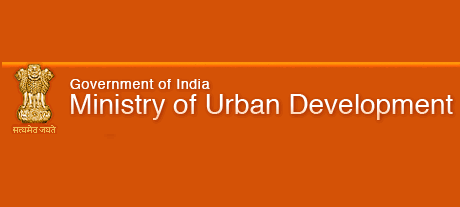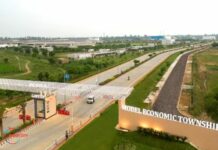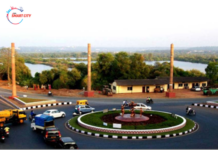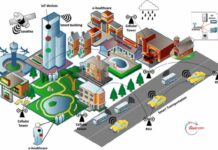
 The Ministry of Urban Development has approved city-level Action Plans for improving basic urban infrastructure in 474 cities in 18 States and Union Territories with an investment of Rs19,170cr under Atal Mission for Urban Rejuvenation and Transformation (AMRUT) for 2015-16. About 90 per cent of this expenditure will be on improving water supply and sewerage infrastructure followed by storm water drains, non-motorised urban transport and provision of green spaces and parks. The Central assistance for this project outlay is over Rs9,000cr.
The Ministry of Urban Development has approved city-level Action Plans for improving basic urban infrastructure in 474 cities in 18 States and Union Territories with an investment of Rs19,170cr under Atal Mission for Urban Rejuvenation and Transformation (AMRUT) for 2015-16. About 90 per cent of this expenditure will be on improving water supply and sewerage infrastructure followed by storm water drains, non-motorised urban transport and provision of green spaces and parks. The Central assistance for this project outlay is over Rs9,000cr.
A total of 497 cities are identified under Atal Mission, while city-level plans of only 23 mission cities in Delhi, Punjab, Uttarakhand, Goa and North-Eastern states are still to be approved.
An inter-ministerial Apex Committee chaired by Madhusudhan Prasad, Secretary (Urban Development), on Thursday, approved AMRUT Annual Action Plans for Uttar Pradesh and Karnataka for 2015-16. Uttar Pradesh has 61 Atal Mission cities while Karnataka has 27.
During the discussion on State Plans, the Apex Committee noted that even as water supply in urban areas of Uttar Pradesh was high, non-revenue Water (water supplied without collection of user charges) was also very high exceeding the norm of 20 per cent for urban areas in case of all mission cities. Prasad has also asked the State Government to focus on reducing NRW to national norm.
The Committee also noted that in case of Karnataka, the 27 urban local bodies included in Atal Mission were required to contribute 30 to 47 per cent of project costs and asked the State Government to increase its share in project costs to reduce the burden on municipal bodies.
The Apex Committee approved a project outlay of Rs4,646cr for UP under Atal Mission for 2015-16. Out of this, Rs1,519cr is for water supply infrastructure, Rs1,698cr for expanding sewerage network services and Rs70cr for providing green spaces and parks in mission cities.
In UP, coverage of water taps is to the extent of 54 per cent of urban households while water supply is at 161 litres per capita per day which is much higher than the norm of 135 lpcd prescribed for urban areas in the country.
As per the approval, investments to be made in some major cities include Ghaziabad- Rs352cr, Lucknow- Rs305cr, Jhansi- Rs223cr, Kanpur- Rs200cr, Allahabad- Rs190cr, Varanasi- Rs180cr, Modinagar- Rs180cr, Mirzapur- Rs140cr, Meerut- Rs125cr, Moradabad- Rs109cr, Bulandshahar-Rs107cr, Ghazipur- Rs98cr, Shahranpur- Rs80cr and Raibareilly- Rs65cr.
For Karnataka, the Apex Committee approved a project expenditure of Rs1,258cr under AMRUT Plan for 2015-16. Of this, Rs552cr will be spent on augmenting water supply in mission cities, 613 on sewerage projects, construction of storm water drains- Rs49cr, provision of green spaces and parks- Rs28cr and urban transport- Rs18cr.
In Karnataka, coverage of households with water taps ranged from a low of 18 per cent in Chickmagaluru to 87 per cent in Mandya. Water supply is reported to be in the range of 35 litres per capita per day in Robertsonpet to 106 lpcd in Ranebennuru. In the capital city of Bengaluru, coverage of water taps is 72 per cent and water supply is at 94 lpcd. None of the 27 mission cities in the State have water supply at the norm of 135 lpcd prescribed for urban areas in the country.
Under AMRUT Plans for 2015-16, investments to be made in the mission cities in water supply, sewerage, storm water drains and urban transport projects are Bengaluru- Rs173 cr, Raichur- Rs77 cr, Hubli-Dharwad- Rs75cr, Bellary- Rs72cr, Gulbarga- Rs66cr, Belgavi- Rs60cr, Bijapur- Rs60cr, Tumakuru- Rs53cr, Bhadravati- Rs51cr, Mysore- Rs50cr, Davanagere- Rs50cr, Shivamogga- Rs48 cr, Gadag-Betagiri- Rs45cr, Bidar- Rs42cr, Hospeta- Rs38cr, Chitradurga- Rs34cr, Hassan- Rs32cr, Bagalkot- Rs31cr, Ranebennur- Rs25 cr, Chikkamagaluru- Rs24cr, Kolar- Rs18cr, Gangavati- Rs16 cr, Robertsonpet- Rs14cr, Badami- Rs12cr, Mangalur- Rs3.25cr.
Under AMRUT, Central assistance is provided to the extent of 50 per cent of the project cost in case of cities with population of less than 10 lakhs each and up to one-third in case of cities with population of above 10 lakh each.





















